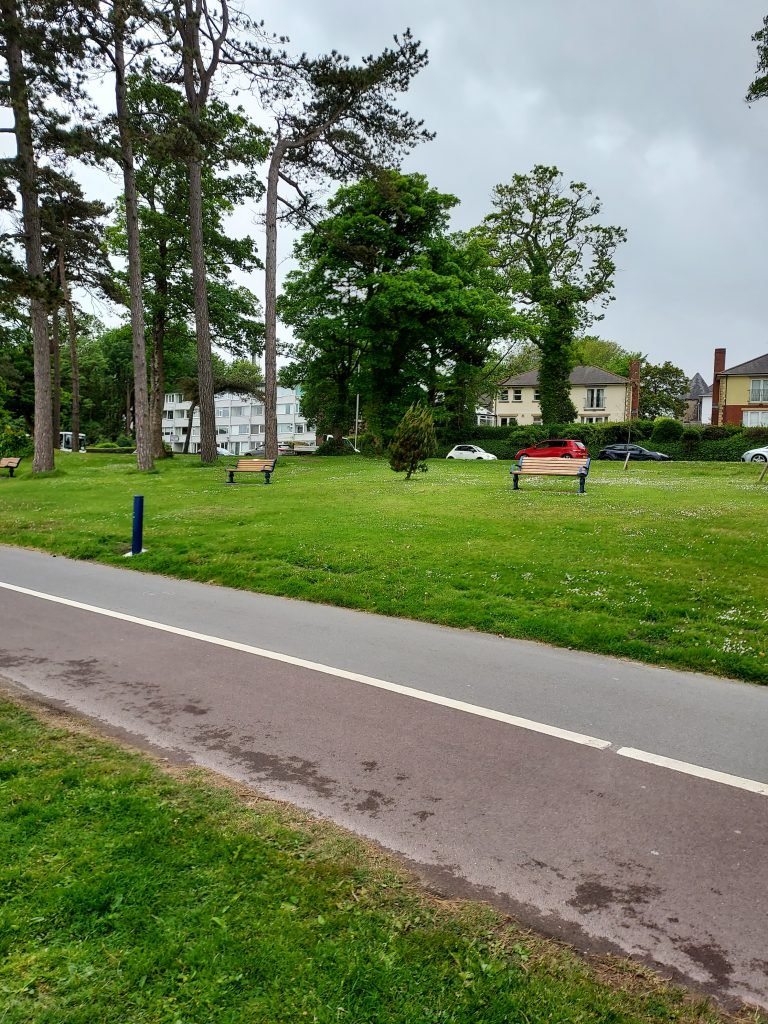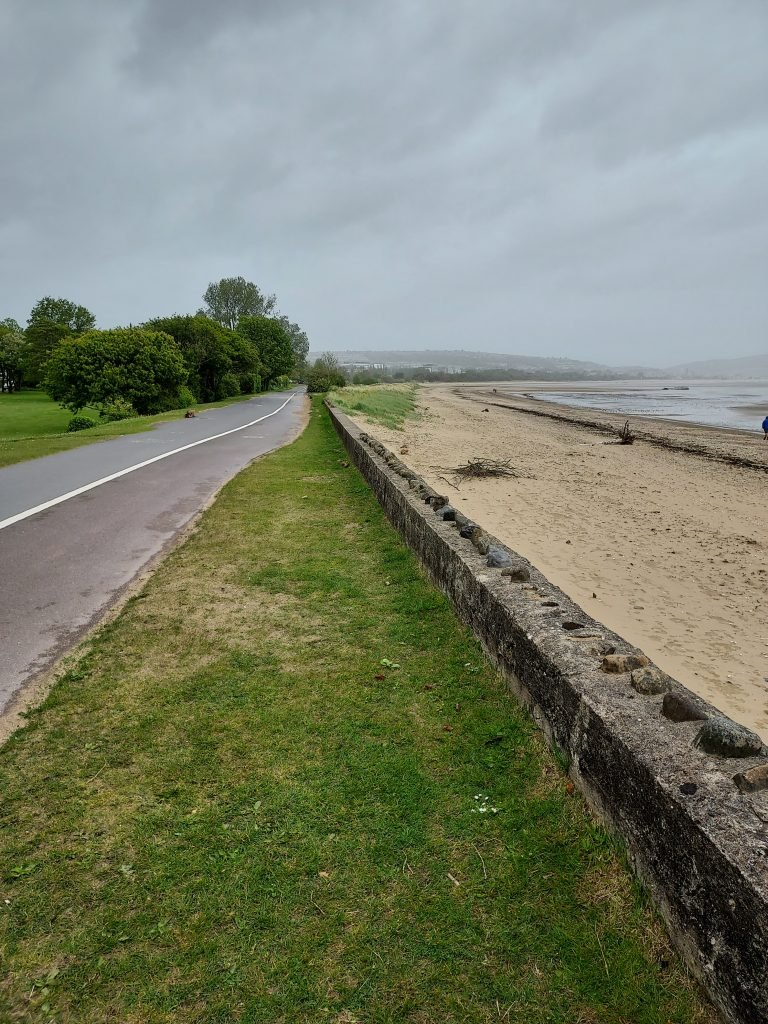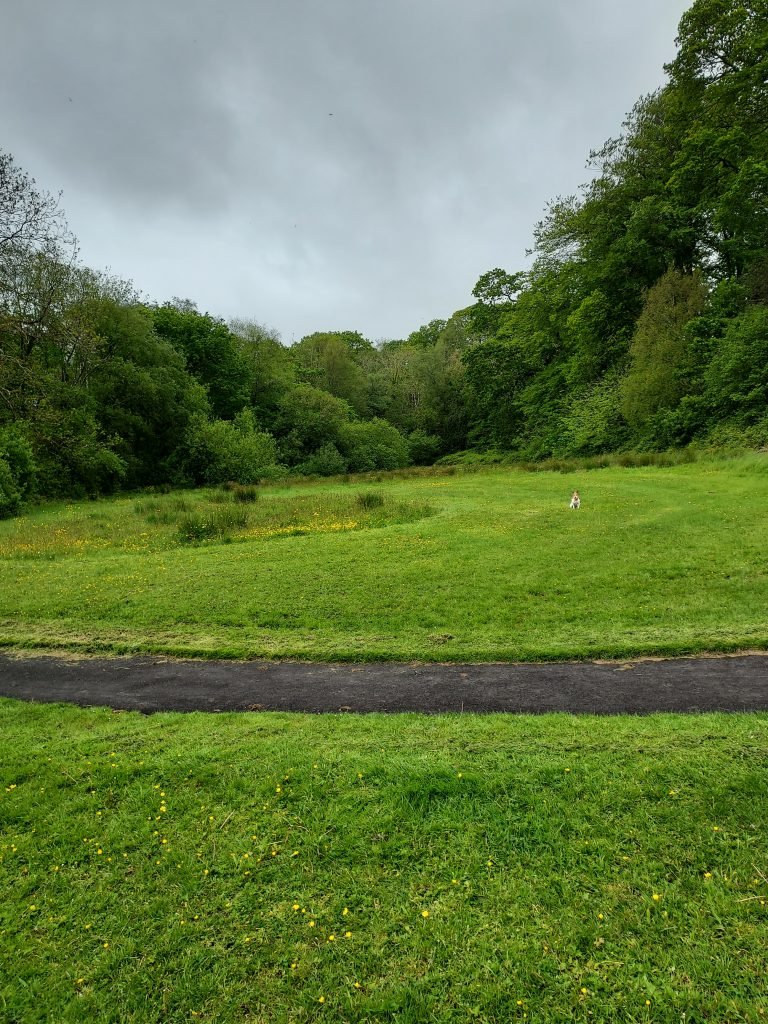Heritage Tour
Many people are looking for their roots nowadays. A quick online search will give an idea of the number of family history programmes on television worldwide at present, such as ‘Who Do You Think You Are?’
The search for your ancestors might begin with what life was like for them. What was their work, how did their children live, what were the houses they lived in, what about their neighbours, workmates and friends? Then you may want to see where your forebears came from, what the places looked like and are they still there? Your family’s history may well have started miles from where you are now, maybe even on the other side of the world.

If you have researched your family tree, you will probably see names you recognise, and some you don’t, there will be fashionable names, biblical names, unusual names, or naming patterns in Wales and other Celtic countries which won’t fit a modern pattern. You will also see place names, some familiar, some not, some indecipherable and some strange.
On a Genealogy Tour I can make the link between the past and present for you. I will research your genealogy; build on the work you’ve done, or indeed start from scratch. I will use birth, marriage and death records, censuses, old maps such as tithe maps, newspaper reports (there are over 300 years to be searched!), wills and testaments, court records from 800 years, and other sources too numerous to mention in archives and libraries.

From the humblest labourer to the mighty landowner, if the records exist, they can be found. From these records we will map out the life of your ancestors, gather the documents, put together an itinerary and off we go.
A visit to your roots will let you hear the language and accents your ancestors used. See the churches or chapels where they got baptized, married, and buried. You will walk in their footsteps, perhaps see the houses they lived in, the places they worked and the sights they saw.
For example.
Tracing the Welsh heritage of a family from Pennsylvania
160 years ago, a miner and his young family left Blaenavon in Monmouthshire, Wales, for Scranton, Pennsylvania, to work in the mines there. Six generations later, the descendants of that family came back to follow their family history.
Using the records available, we were able to go to the streets the family had lived in, the terraces of cottages holding on to the hillsides. We talked about how the houses sprang up to accommodate the workers arriving to get jobs in the coal mines, iron mines, limestone workings, furnaces, forges and railways. We talked about the boom and bust of the times, and how their ancestors left for better times in Pennsylvania.

As we walked around the industrial heritage town of Blaenavon we saw the church of St. Peter which had been built by the ironmasters, and where ancestors had been baptised, married and buried. Next to the school one of the children attended, the rest of the children worked at the Iron Works.
We toured the spectacular Blaenavon Ironworks to see beautifully restored cottages, a company shop, the iconic blast furnaces and marvelled at the Balance Tower, a hydraulically operated lift which once raised wagon loads of raw materials to the top of the furnaces.

The 19th century family had moved around in the area as the times changed and the work places opened up and closed down. For instance they had gone north towards Govilon in Monmouthshire and we were able to travel on the road they used. We stopped and could see where the mountain had been tunnelled to move the iron north, to save the company the tolls for going south.
I was able to show the family a long-since derelict village with schoolhouse and pub built by the company for forge workers and miners – the place their ancestors had lived, with nature taking back over.
From this viewpoint we could see the Blaenavon World Heritage Site on one side and the National Park of Bannau Brycheiniog (Brecon Beacons) on the other. Now the family could see the geography of the area and why it had lured the venture industrialists and then the workers in.

Continuing north, following the iron route, we saw the schoolhouse next to the canal where an ancestor had been a housekeeper and walked along the canal path for a few minutes, now a pretty leisure area, but once a busy industrial transport route.

Then to the stunning St Peter’s Church in Llanwenarth Citra, next to the River Usk, because I had found the marriage of their seven times grandparents there in the 1840s, and where the lovely family were able to leave a message in the visitors’ book on their 25th wedding anniversary in 2023.
Past, present and families. Perfect.
I will research, plan and guide you through your route.
My friends at Janet Redler Travel Limited will put the whole thing together for you click on the the underlined text to go to their website.
Happy Christmas. Nollaig shona. Nadolig llawen.
Thanks to all who supported this blog over the last difficult year.
If you need a last minute idea what about a gift certificate?
Research from £25 per hour.
Email: gifts@genealogy-and-you.com for details.
Sent as pdf. via email.
Gift-Certificate-1If the world opens up I hope to be able to book more:
Genealogy tours. Look out for Ancestrytour.co.uk.

One to one research help.

House Histories.

Family Histories.

Genealogy.

More Genealogy as you walk, Blackpill, Swansea.
Eva and I enjoyed our walk in North Wales with the bits and pieces of genealogy thrown in so much we decided to have a stroll a bit nearer home here in Blackpill, Swansea.
The first part of the walk was past the site of the now demolished building Llwynderw, it is a gated estate now, but in 1939 it was the household of Mrs Folland, widowed born in 1878, a widow of private means[1]. This house is not noted on the ordnance Survey map first series of 1830, however a familiar name which we walk by is another place ‘Lilliput’[2] seen on the same map[3], demolished in about 1962[4] as part of the development of Mumbles Road. The1851 census taken for Lilliput on Mumbles Road will find Mr. James Strick born Cardiganshire the head of the household aged 38 an insurance agent married to Emily aged 39, she was born Devonshire, they had four children all born Swansea age 8 down to 1, also living there were an 18 year old governess Fanny Suttril born Bridport, Dorset and Susan Davies 21 year old servant from Llandeilo[5].

Then we take in a bit of the route of the Mumbles Railway, you can have a look at a BBC history blog for some insights[6], one of the initial investors in the line was Benjamin French of Morriston and latterly of Neath, here he is in the 1841 census of independent means his address being the Parade in Neath, Mr. Benjamin French aged 70, not born in the county of Glamorgan, of Independent means, his wife (implied) Ann French aged 55, not born in the county either, Elizabeth French aged 15 not born in the county and Hannah Lawrence aged 20 not born in the county a house servant[7].
(Aside from the person details for the family historian, be aware that the 1841 census more often than not noted the ages of those over 15 were rounded down to the nearest 5, so Benjamin French could have been 75 to 79 years of age this is true for this page as looking at the rest of the census page all ages over 15 are multiples of 5, I’ve also noted the relationships are implied because this census did not record a household head or the relationship to that person, you can see the delineation between households with // on the records.)

The route of the railway is now the walking and cycle path, on the left as we walked back to Blackpill from the direction of Mumbles would have been a Smithy (Blacksmith) long gone now, nearby to the Woodman pub which is still there for a pint or two. Investigating these places, old maps hold a plethora of information[8], ways to emphasize other types of research you might be able to do. For instance if you had an ancestor from Blackpill they would have known of (or been)… “BLACKPILL CORPORAL’S D.C.M. Corporal Sidney Lloyd (154309), Motor-Transport A.S.C., son of Mr. and Mrs. I D. Lloyd, 3, Brookside-terrace. Blackpill, has been mentioned in despatches and recommended for the D.C.M. for gallant conduct in Egypt. Lloyd, who joined up in October 1916, took part in the capture of the Delhia Oases, and for over 12 months acted as Q.M.S. at Karga Oases. Before joining up he worked for his father, the well-known Blackpill blacksmith, and was one of the original members of the Mumbles V.A.D., doing duty as an orderly at the local hospital. Another brother, in the Welsh Guards, is serving in France.[9] A glance at the 1901 census will give the family viz. David Lloyd married aged 45, Head of the Household, born Bishopston, Glamorganshire a Coach Builder (employing blacksmiths) his wife Sarah aged 46, she was born Swansea, Glamorganshire and their family of five sons including the above mentioned Sydney aged 12, born Oystermouth and attending school.[10]

Nearby in the same census was the Woodman Hotel where the Licensed Victualler was Sarah Maddams a widow aged 63, Head of the household born LLandeilo, Carmarthenshire and her daughters Edith Crooke married aged 39 born Bayswater, London and Lilian Mary Fitness married aged 24 born Fulham, London.[11]

The path we were walking near the Woodman was reported on in 1874 for a highway robbery! The highwaymen described as two ruffians, Anthony Burke and Edward Simons living on waste ground at Blackpill. They supposedly, had accosted a Mr. Henry Edward Clasham an apprentice to a tea broker in London but living at Brunswick Street Swansea, after he had met up with a friend at the Woodman on the way back from Mumbles to Swansea on horseback. The ruffians attempted to pull him off the horse and demanded a shilling which he gave them, he rode back to Blackpill and got the policeman PC Hodges who arrested Simons, Simons claimed it wasn’t him who committed the dirty deed.[12] More names to be researched if you were of a mind to.

Back to the walk for Eva and I, into Clyne Gardens and the connection to the well documented and well heeled Vivian family. The probate record for William Graham Vivian of Clyne Castle, Glamorgan and 7 Belgrade Square Middlesex, died 21 August 1912 shows his estate value was £1,000,000[13], 19th century industrialists did not live without ostentation.

Finally, a stroll home to our house built in the 1950’s on land which was stated in 1845 on the tithe map, as arable land, being the middle field number 206, the occupier and landowner was Berrington Jenkin Davies[14].
A short walk with plenty of genealogy for me, and for Eva a vestige of Clyne Forest, an important 11th Century Norman landmark[15], but all she cares about is playing among the trees.

[1] 1939 Register, Wales. Llwynderw, Mumbles Road, Swansea, Glamorganshire. FOLLAND, Leah N. 21 September 1939. RG101/7288B/007/32 Letter Code: XIBE. Collection: 1939 register. The National Archives. www.findmypast.co.uk : accessed 18 May 2021.
[2] University of Portsmouth. A Vision of Britain through time. https://www.visionofbritain.org.uk/maps/sheet/first_edition/sheet37 : accessed 18 May 2021.
[3] Ibid.
[4] Baker, Mark. A Complete List of Lost Welsh Country Houses. http://www.welshcountryhomes.co.uk/lost/ : accessed 18 May 2021.
[5] Census records. Wales. Liliput Cottage, Oystermouth, Swansea. 30 March 1851. STRICK, James (head) HO107/2467/F. Collection: Census Transcript Search, 1841-1911. www.thegenealogist..co.uk : accessed 19 May 2021.
[6] Carradice, Phil (2011) The Mumbles Railway. Wales History [blog]. 24 March. https://www.bbc.co.uk/blogs/waleshistory/2011/03/the_mumbles_railway.html#:~:text=The%20Mumbles%20Railway%20was%20built%20under%20an%20Act,Construction%20was%20completed%20in%201806%20and%20services%20began. : accessed 19 May 2021.
[7] Census records. Wales. Neath, Glamorganshire. 06 June 1841. FRENCH, Benjamin. HO107/1421/F. Collection: Census Transcript Search, 1841-1911. www.thegenealogist.co.uk : accessed 18 May 2021.
[8] The National Library of Wales. Welsh Tithe Maps. https://places.library.wales/browse/51.594/-3.992/14?page=1&alt=&alt=&leaflet-base-layers_66=on : accessed 19 May 2021.
[9] South Wales Weekly Post. (1918) Blackpill Corporal’s DCM. South Wales Weekly Post. 25 May. p.3c Collection: National Library of Wales Welsh Newspapers Online.
https://newspapers.library.wales/view/4110689/4110692/77/Blacksmith%20blackpill : accessed 20 May 2021.
[10] Census records. Wales. Blackpill, Oystermouth, Glamorganshire. 31 March 1901. LLOYD, David (head). RG13/5084/F. Collection: Census Transcript Search, 1841-1911. www.thegenealogist.co.uk : accessed 20 May 2021.
[11] Census records. Wales. Blackpill, Oystermouth, Glamorganshire. 31 March 1901. MADDAMS, Sarah (head) (head). RG13/5084/F. Collection: Census Transcript Search, 1841-1911. www.thegenealogist.co.uk : accessed 20 May 2021.
[12] Cardiff Times. (1874). Highway Robbery at Swansea. 16 May. p. 3b. Collection: British Newspapers. www.findmypast.co.uk : accessed 20 May 2021.
[13] Testamentary Records. Scotland. 27 September 1912. VIVIAN, William Graham. Calendar of Confirmations and Inventories p 418. Collection: Scotland National Probate Index (Calendar of Confirmations and Inventories), 1876-1936. www.ancestry.co.uk : accessed 20 May 2021.
[14] The National Library of Wales. Welsh Tithe Maps. http://hdl.handle.net/10107/4535740 : accessed 20 May 2021.
[15] Swansea Council. Clyne Gardens. https://www.swansea.gov.uk/clyne : accessed 20 May 2021.
Genealogy as you walk.
I’ve been quiet for a little while, with the easing of lockdown and the need to get going again we set off for a break to N. Wales in the motorhome. Eva the Jack Russell needed occupying as she was not allowed off the lead. Somehow, I had the foresight to pack my walking boots and here’s a bit of the adventure.
1st stop was Llanberis, the obvious walk was to the top of England and Wales, yr Wyddfa (Snowdon). There is a railway line to the summit, but it was closed due to the pandemic. Got me thinking, the owner of the land which the line cut through was a Mr Assheton-Smith of the Vaynol estate, he wasn’t happy (about 1870) thinking the railway would spoil the scenery[1] some genealogy on that family Charles Gordon Assheton-Smith can be found in the London Gazette[2] appointed to be deputy Lieutenant signed by the Lord Lieutenant of Caernarvonshire in 1906.
A random look in the 1911 census shows some residents of the village of Llanberis viz. John E. Davies aged 48, Head of the family Married, born Llanberis, Carnarvon, Shop Keeper, an Antiques Dealer, bilingual speaking both Welsh and English, his wife Elizabeth Davies 47, married 27 years they had had 7 children, 6 were still living, she was born Llanidan, Anglesey, bilingual also. Living there too were Margaret Clara Davies 26, their Daughter, Single, born Llanidan, Anglesey, bilingual. Buddug A. Davies 16, their Daughter, Single, born Llanberis, Carnarvon at School, bilingual. Goronwy Owain Davies 13, Son, born Llanberis, Carnarvon at School, bilingual, and Maelir Glyn Davies, 12, Son, Llanberis, Carnarvon, at School, bilingual.[3]
The area is overseen by the slate quarries, so here is a family of that industry in 1911 note the form is in Welsh. Robert Henry Jones aged 59, Penteulu (head of the family pen) Priod (married), born Tygwyn Waenfawr Plwyf Llanbeblig, Carnarvonshire, Cloddiwr Mewn Chwarel Lechi (excavator at the slate quarry) gweithiwr (worker), Cymraeg (speaks Welsh only) his wife Ellen Jones 49, Gwraig (wife) Priod 27 years, born Murmawr Llanberis, Carnarvonshire, y ddwy (bilingual), their son John Evans Jones 19, Mab (son), Sengl (single) born Murmawr Llanberis, Carnarvonshire, Myfyriwr Mewn Coleg (student at college) y ddwy (bilingual). They lived at Minynant Llanberis[4], it would be a project to find both the address now…
2nd a quick stop at Betws y Coed, the railway had a major influence on the development of this area, again an arbitrary look found a Mr. C.E Clarke, he was a booking Clerk at Bettws y Coed, he was born 21 April 1874, joined the company 6 November 1891, his annual rate was £60 5/-, he transferred to Blaenau Ffestiniog on 1 February 1898[5].
We transferred ourselves to Gellydan near Blainau Ffestiniog a newspaper search is useful for biography in genealogy…” BLAENAU FESTINIOG. MEDICAL SUCCESS.—The son of Dr R. D. Evans, Mr Thomas John Carey Evans, has passed the primary examination for the Fellowship of the College of Surgeons, England. F.R.C.S. at an examination held from April 3rd to May 5th, at The Examination Hall, London. -The subjects were: Advanced anatomy, advanced physiology, and comparative anatomy. He is 18 years of age the average age to go in for the examination is 23…”[6] . The Motorhome site was in Gellydan, a tithe map search shows Robert Pugh [7] in the Tithe maps of Wales so if your are related to him you can see area walked.
Finally, Devil’s Bridge a walk through the farm fields, bothies along the Mynach and into the forestry all covered in snow the next day. Prompted a look at some local history which can be used for genealogy. I was walking around the former estate described in 1848 “EGLWYS-NEWYDD, or LLANVIHANGEL-Y-CREIDDYN-UCHÂV, a chapelry, in the parish of Llanvihangel-y-Creiddyn, union of Aberystwith, hundred of Ilar, county of Cardigan, South Wales, 14 miles (S. E.) from Aberystwith; containing 1131 inhabitants…This place derives the latter of these names from its relative situation in the parish, and the former from the erection of a church, in 1803, by the late Thomas Johnes, Esq., on the site of a previous edifice built here in 1620, by the Herberts of Havod, for the convenience of the family, and the accommodation of the miners employed in the adjoining district of Cwm Ystwith. Havod, the seat of the late Mr. Johnes, was originally the residence of a branch of the Herbert family, who, embarking in the mining adventures of the neighbourhood, built a house here, which, from the nature of the ground and the badness of the roads, being inaccessible except during the summer, obtained the appellation of “Havod,” signifying a summer residence.”[8] So we have the Herbert’s Mr Thomas Johnes and later in the article Henry Hoghton Esq. all eminently searchable.
There is always plenty to keep the genealogist occupied!
If you think you would like a tour of the places your ancestors lived in Wales, get in touch, once things are opening up we can make that happen.
[1]Wikipedia.SnowdonMountainRailway. https://en.wikipedia.org/wiki/Snowdon_Mountain_Railway : accessed 08 May 2021
[2] Recorded in The Gazette (London Gazette), 23 February 1906 Issue:27889 Page:1356.
[3] Census records. Wales. Llanberis, Caernarvon. 02 April 1911. DAVIES, John E. (head). RG14 – PN34439 RD630 SD2 ED7 SN159. Collection: Census Transcript Search, 1841-1911. www.thegenealogist.co.uk : accessed 08 May 2021.
[4] Census records. Wales. Llanberis, Caernarvon. 02 April 1911. JONES, Robert Henry (penteulu). RG14 – PN34439 RD630 SD2 ED7 SN196. Collection: Census Transcript Search, 1841-1911. www.thegenealogist.co.uk : accessed 08 May 2021.
[5] Railway Employment Records, 1833-1956. CLARKE, C.E. Class: RAIL410; Piece: 1847. Collection: London and North Western Railway Company: Records; www.Ancestry.co.uk : accessed 09 May 2021
[6] Carnarvon and Denbigh Herald and North and South Wales Independent (1903). Blaenau Festiniog. Carnarvon and Denbigh Herald and North and South Wales Independent. 08 May. p. 5a https://newspapers.library.wales/view/3606066/3606071/29/blaenau%20ffestiniog : accessed 09 May 2021
[7] The National Library of Wales. Map of Maentwrog parish in the County of Merioneth. http://hdl.handle.net/10107/4532461 : accessed 09 may 2021.
[8] Samuel Lewis. “Edern – Eidda,” in A Topographical Dictionary of Wales, (London: S Lewis, 1849), 320-328. British History Online, accessed May 10, 2021, http://www.british-history.ac.uk/topographical-dict/wales/pp320-328.





